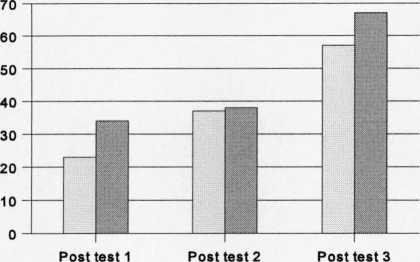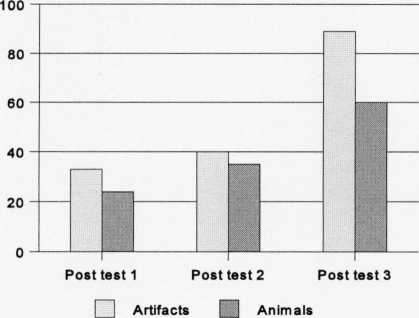Does the children ,s prior knowledge of the lexical items influence the provision of stories?
As the Figure 7.32 below shows, children provided more stories for the partially represented
than the unknown words across testing. Nevertheless, statistical analysis revealed that the
differences were not significant.
Figure 7.32 Total number of stories provided by children’s prior knowledge of the
lexical items across testing

∣__] Unknown words
∣~] Partially represented words
Is the provision of stories influenced by the semantic domain of the lexical items?
As the Figure 7.33 shows, children provided more stories for the words describing artifacts
than for the words describing animals across testing. The differences were significant for post
test 3 (Wilcoxon: Z=2.9, p<.005). The same pattern was found for each one of the groups.
The differences were found to be significant for the Lexical contrast (Wilcoxon: Z=2.03,
p<.05) and Definition group (Wilcoxon: Z=2.0, p<.05) during post test 3.
Figure 7.33 Total number of stories provided by the semantic domain of the lexical
items across testing

267
More intriguing information
1. The InnoRegio-program: a new way to promote regional innovation networks - empirical results of the complementary research -2. Consumption Behaviour in Zambia: The Link to Poverty Alleviation?
3. The name is absent
4. The name is absent
5. Bargaining Power and Equilibrium Consumption
6. The name is absent
7. On the Relation between Robust and Bayesian Decision Making
8. The name is absent
9. Ultrametric Distance in Syntax
10. The name is absent